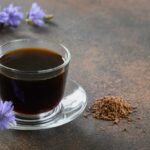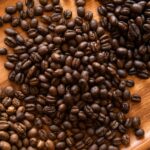Discover the world of coffee roasting with this in-depth guide on the different levels of roasting coffee beans – light, medium, dark, and French. Explore the unique flavors, aroma, and brewing methods for each roast.
Table of Contents
Roasting Coffee Beans:
Coffee is an integral part of our daily lives, and the art of roasting coffee beans plays a crucial role in creating the perfect cup of joe. By understanding the roasting process and the nuances of each roast level, you will be able to savor the rich flavors and aromas that make coffee such a beloved beverage. Let’s dive into the depths of coffee roasting and uncover the secrets behind each roast level.
The Art of Roasting Coffee Beans: Light, Medium, Dark, French
The Roasting Process: Transforming Green Beans to Brown Gold

Before we delve into the different roast levels, it’s essential to understand the roasting process itself. Roasting coffee beans is a delicate balance of heat, time, and technique that transforms green coffee beans into the brown, aromatic beans we know and love. Here are the key steps involved in the roasting process:
- Green coffee beans are heated in a roasting machine or oven.
- As the beans heat up, they release moisture and begin to turn yellow.
- The beans undergo the Maillard reaction, where sugars and amino acids react, leading to browning and flavor development.
- The beans expand and crack, releasing oils and creating the coffee’s aroma.
- Depending on the desired roast level, the roasting process is stopped at a specific temperature and time.

Light Roast: A Bright and Lively Choice
Lightly roasted coffee beans are roasted just past the first crack, typically at temperatures between 356°F and 401°F (180°C and 205°C). The beans retain a light brown color and a bright acidity, making them perfect for those who enjoy a lively cup of coffee. Here are some key characteristics of light roast coffee:
- High acidity
- Light body
- Complex and fruity flavors
- Delicate aroma
Light roast coffee is best suited for manual brewing methods like pour-over, Chemex, or AeroPress.
Medium Roast: The Perfect Balance
Medium roast coffee beans, also known as the “American roast,” are roasted between 410°F and 430°F (210°C and 221°C). The beans exhibit a medium brown color, and the flavors are well-balanced between acidity and body. Key characteristics of medium roast coffee include:
- Balanced acidity and body
- Rich flavor
- Sweet aroma
- Slight oil sheen on the surface
Medium roast coffee works well with drip coffee makers, pour-over, and espresso machines.
Dark Roast: Bold and Smoky
Dark roast coffee beans are roasted between 437°F and 464°F (225°C and 240°C), resulting in a dark brown color with an oily surface. The flavors become more pronounced, with a bold body and a smoky, bittersweet taste. Some key traits of dark roast coffee are:
- Low acidity
- Full body
- Bold, smoky flavors
- Strong aroma
Dark roast coffee is perfect for espresso, French press, and Turkish coffee brewing methods.
French Roast: The Darkest of Them All
French roast coffee beans are roasted at temperatures above 464°F (240°C), taking them to the brink of the second crack. The beans are very dark brown, almost black, with a shiny, oily surface. French roast coffee delivers an intense flavor with a distinct smoky, burnt taste. Here are the key characteristics of French roast coffee:
- Very low acidity
- Heavy body
- Intense, smoky flavors
- Powerful aroma
French roast coffee is ideal for those who love a bold, strong cup and is suitable for espresso and French press brewing methods.

Roasting Coffee Beans: Light, Medium, Dark, French – Frequently Asked Questions (FAQs)
What is the main difference between light, medium, dark, and French roast coffee beans?
The primary difference lies in the roasting time and temperature. Light roast beans are roasted for a shorter time at lower temperatures, while French roast beans are roasted for the longest time at the highest temperatures. This results in varying levels of acidity, body, flavor, and aroma for each roast level.
Can I roast coffee beans at home?
Yes, you can roast coffee beans at home using specialized coffee roasting equipment or even a conventional oven or stovetop. However, achieving consistent results requires practice and a thorough understanding of the roasting process.
How should I store my roasted coffee beans?
Store your roasted coffee beans in an airtight container, away from direct sunlight, heat, and moisture. This will help preserve their freshness, flavor, and aroma.
How long should I wait after roasting before brewing my coffee?
It is recommended to wait at least 12-24 hours after roasting to allow the beans to degas and the flavors to develop fully. However, some roasts might require up to 72 hours of rest for optimal flavor.
Can I use any brewing method for all roast levels?
While you can technically use any brewing method for all roast levels, specific roasts are better suited to particular brewing techniques. For example, light roast coffee beans work well with pour-over methods, while dark and French roast beans are ideal for espresso and French press brewing.

Conclusion: Roasting Coffee Beans – Light, Medium, Dark, French
Roasting coffee beans is a delicate and intricate process that creates the unique flavors, aromas, and characteristics of the coffee we enjoy. Whether you prefer the bright, fruity notes of a light roast or the bold, smoky intensity of a French roast, understanding the nuances of “Roasting Coffee Beans: Light, Medium, Dark, French” will enhance your appreciation for the art and craft of coffee roasting. With this knowledge, you can experiment with different roast levels, brewing methods, and blends to create the perfect cup that suits your taste buds. So, go ahead and explore the exciting world of coffee roasting and elevate your coffee experience to new heights!
Check out our Coffee Grinds Guide!
Daily Demitasse is a participant in the Amazon Services LLC Associates Program, an affiliate advertising program designed to provide a means for sites to earn advertising fees by advertising and linking to Amazon.com. We also participate in other affiliate programs which compensate us for referring traffic.














